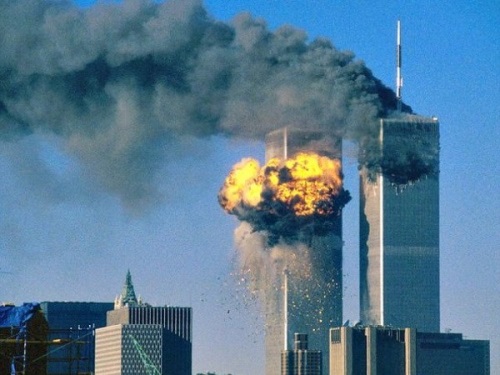The Sep 11, 2001 terrorist attacks killed nearly 3,000 people, shocked and panicked the U.S. by the brutality and peril of terrorism. To retaliate, US President George W. Bush launched a global “war on terror”, and “counter-terrorism” military operations in Afghanistan (October 2001), starting of a new Crusade of the U.S. in the post- Cold War era.
 |
| 11-9 attacks (photo: Reuters) |
According to international experts, over the past 15 years, with the two Presidents and several strategies, the “war on terror” worldwide has gained feasible results. The U.S. established the Department of Homeland Security, the United States Northern Command, the Counter-Terrorism Special Force, and appointed the Director of National Intelligence, with force scale and budget respectively two and three times larger than before. Measures and means to protect air, maritime, homeland, and cyber security have been developed and closely organized in order to form a strong “defensive boundary” for the United States. Thus, the U.S. has foiled a number of terrorist plots, and basically there have not been similar attacks. Moreover, by launching the two wars in Afghanistan and Iraq, the U.S. has “killed two birds with one stone”. It showed off its military power, tested new weapons, and publicly deployed its forces deeply into Central Asia and the Middle East, enabling the U.S. to control global geo-strategy more effectively. Moreover, as the leader of the “international coalition” to fight against terrorism, the U.S has strengthened its soft and hard power, which gradually provides it with foundations for occupying the leading role in the world order. The U.S. and its allies in the international coalition against terrorism annihilated the most notorious terrorist Osama Bin Laden, many other second-in-commands of Al-Qaeda and top IS leaders, which are considered pluses of the global war on terror.
A part from the positive outcomes, the US war on terror has exposed limitations and shortcomings as follows:
First, being vague about defining terrorism and terrorist. This is the most noticeable issue and the weakest point in the US war on terror. At the beginning of the war, President George W. Bush administration made a list of hundreds of terrorist organizations worldwide, including an “axis of evil” (Iran, Iraq and North Korea), considering these as targets of special interest. Therefore, after “finishing” the war in Afghanistan, giving the reason that Bagdad developed nuclear weapons and supported Al-Qaeda, in March 2003, the U.S. unilaterally attacked Iraq and overthrew President Saddam Hussein. This invasion generated a wave of protest about its righteousness and necessity in international forums of the UN and among the American people. In fact, 5 years after the end of the war, investigations revealed that the reason used by the White House for the invasion of Iraq was not compelling. It was actually used to cover up the truth and deceive the public. And certainly, all the blame would be put on the intelligence agencies. Many countries condemned the invasion and saw it as a war under the cloak of counter-terrorism that the U.S. waged to realize its hegemony in the Middle East - a region of crucial geo-strategy for the US global strategy.
Second, the US strategy to fight terrorism has not produced the desired outcome. Over the past 15 years, the U.S. has implemented two strategies to fight against terrorism. One is President George W. Bush’s Preemptive Strike Strategy (2001), also known as the Bush Doctrine, and the other is the New Strategy to Combat Terrorist Threat (2003) that President Barrack Obama is still implementing. As a result, the U.S. has been “bogged down” in the two battlefields (Afghanistan and Iraq) for over a decade.
Moreover, the 15-year war on terror has affected the U.S. in various economic, political, and diplomatic aspects. Economically, according to latest statistics, the U.S. has spent dozens of thousands of billion USD on the war, weakening the US economic power considerably. It now remains the world No.1 economy, but also the world’s biggest debtor (owing more than $10 trillion).
Gloomy outlook for the US war on terror. International experts believe that President Barrack Obama’s New Strategy to Combat the Terrorist Threat has made adjustments (subjects, methods and flexibility); however, its nature has not had considerable changes. Reality proved that lacking synchronous measures, particularly effective ones to handle current troubled relationships between the West and the Muslim world, and relying too much on the use of military power to fight against terrorism led to never-ending hatred and violence. Not defeating terrorism, it accidentally stimulated terrorism even more vigorously.
It is believed that to deal effectively with terrorism, the US should adopt synchronous measures with the cooperation of the international community, especially striving to eradicate poverty, injustice, and inequality worldwide. Military measures must be taken on the basis of international law, the UN Charter; respecting countries’ independence, sovereignty, and territorial integrity; not using or threatening to use force to serve specific intrigues. That is a new approach to the issue of counter-terrorism. Otherwise, the US war on terror is more likely to become a never-ending one.
Kieu Loan